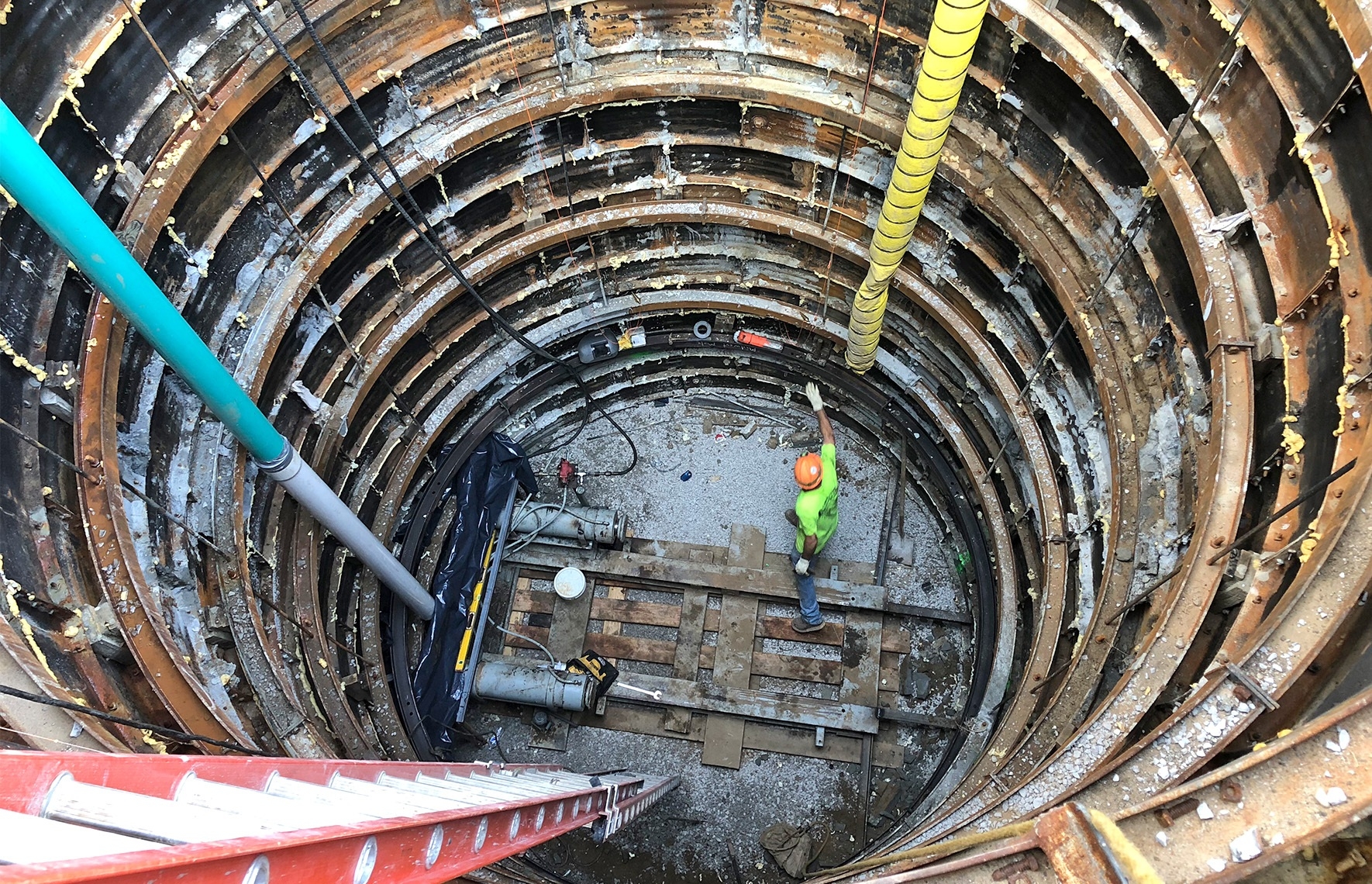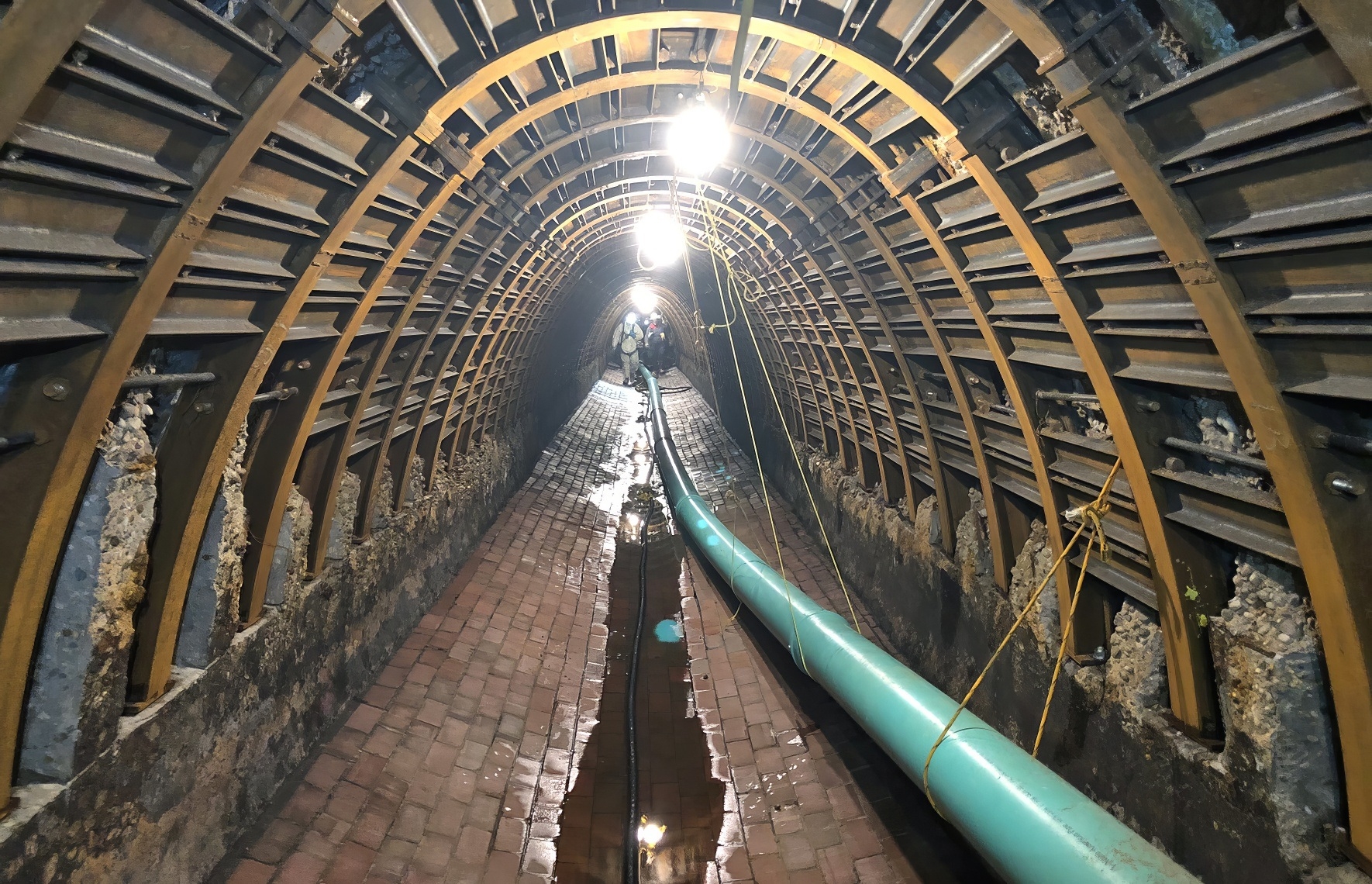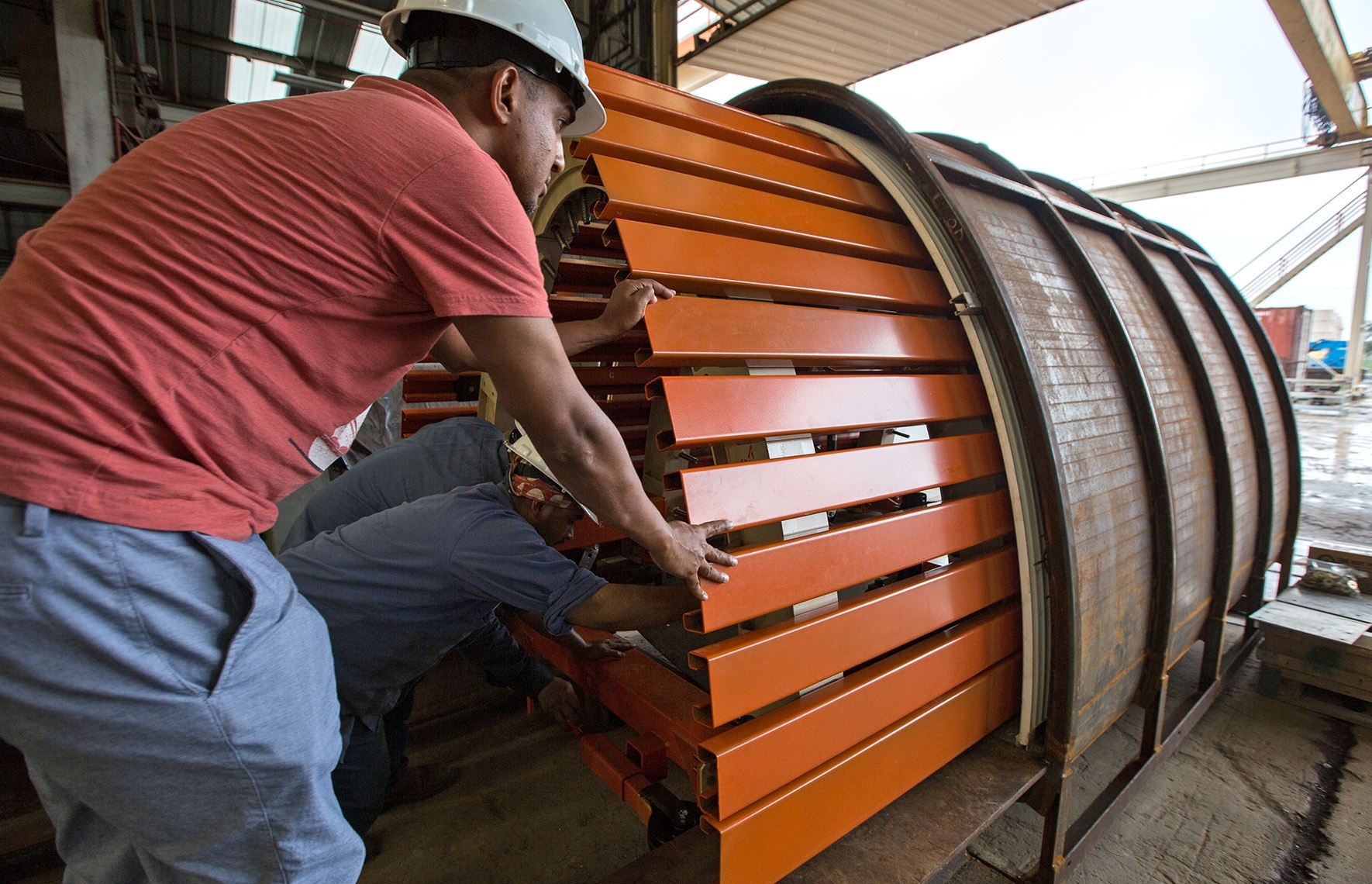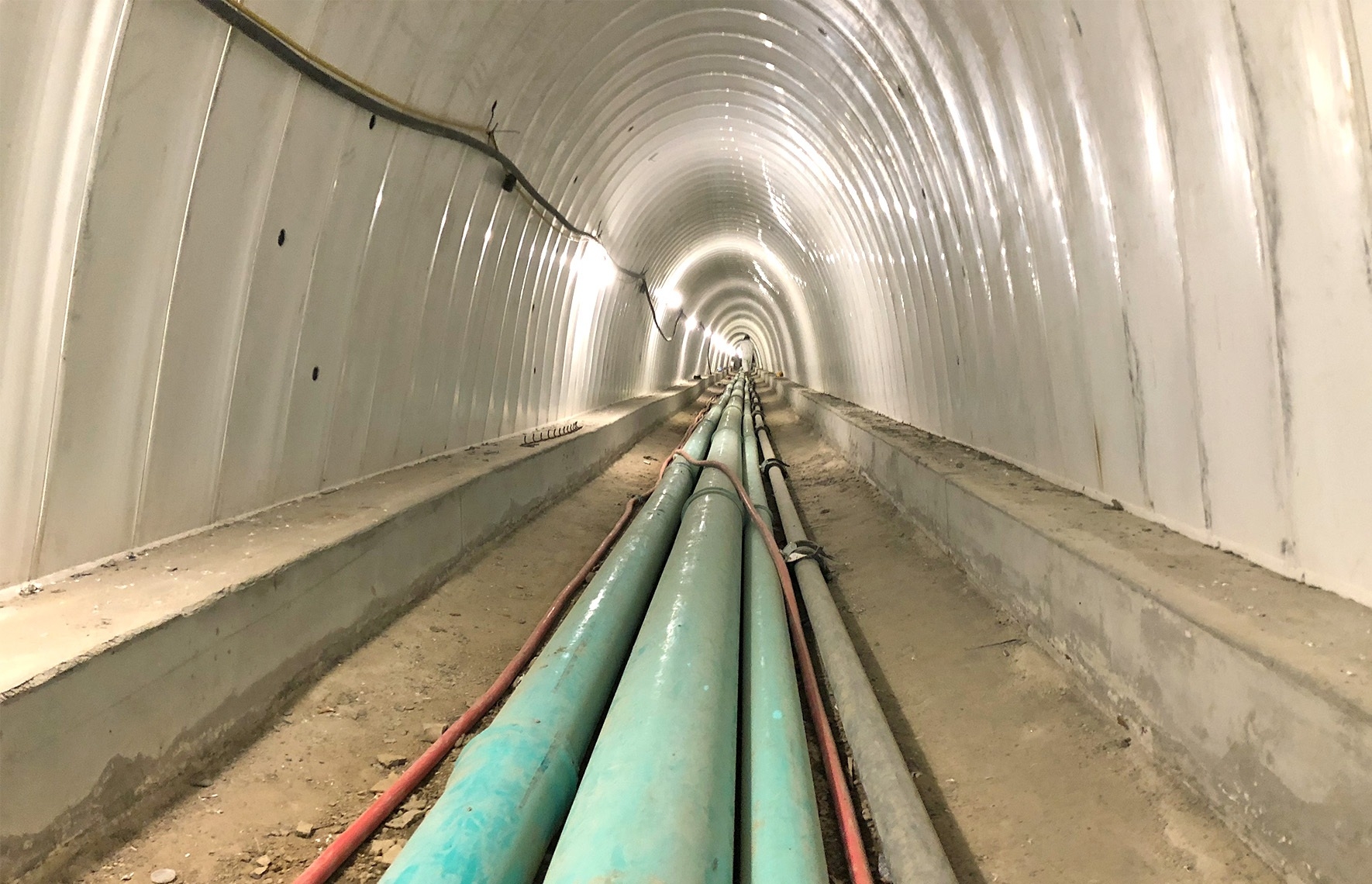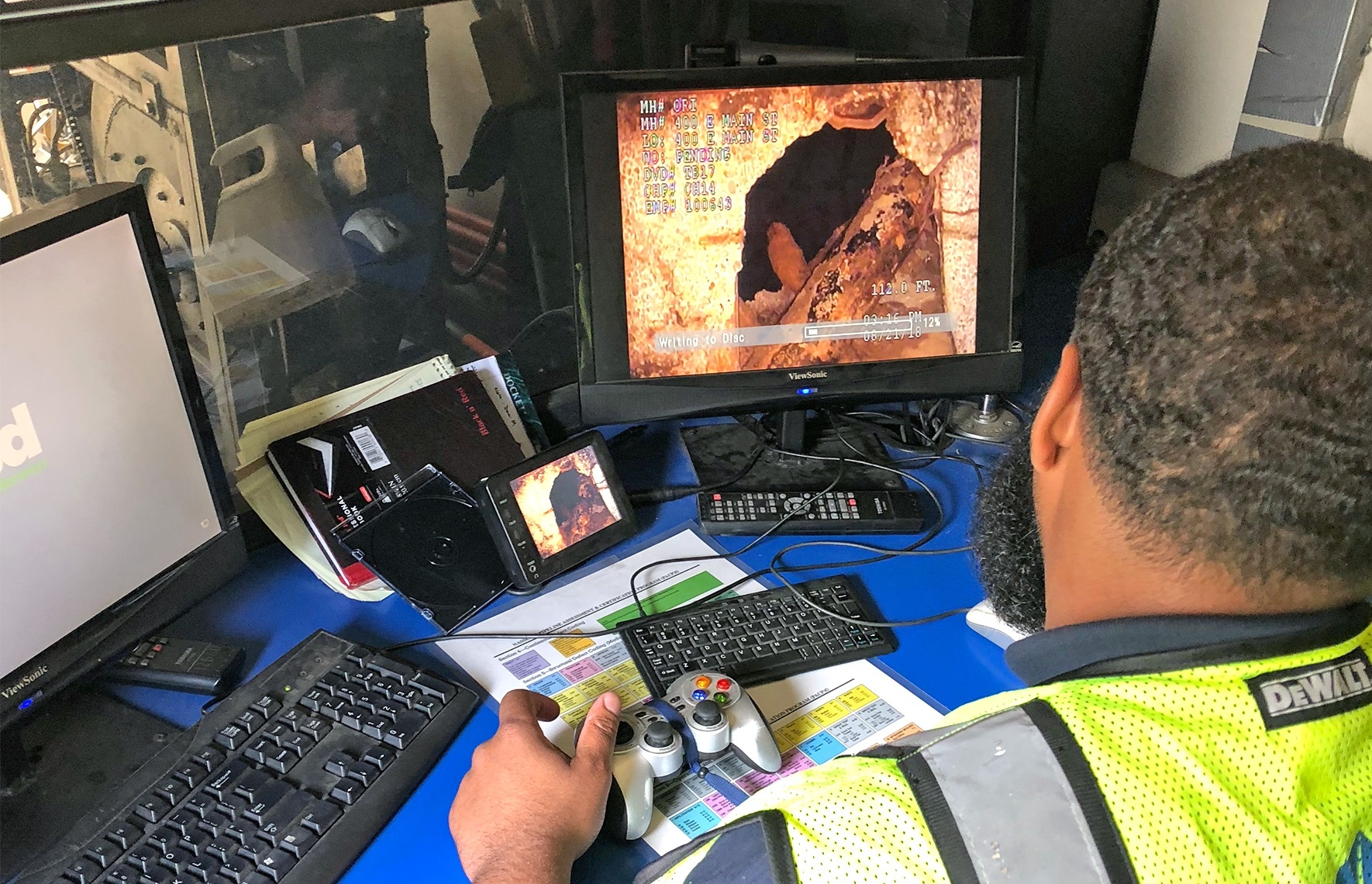Our team's additional investigations confirmed that the ORI was in an advanced state of deterioration.
In many locations none of the tunnels’ initial 12” thick crown remained. In other areas, the tunnel walls had eroded well beyond the depth of the reinforcing steel. Ulliman Schutte worked closely with the Designer and Louisville MSD to evaluate several rehabilitation methods with regard to cost, risk, schedule, and public impact. Once finalized, the optimal solution included customized structural stabilization, substantial concrete rehabilitation, and PVC liner installation. As with many tunnels of its age, each tunnel cross-section was unique, necessitating the fabrication of fully customized structural elements. The US team took several measures to minimize any impact to the public – this included keeping streets intact during construction and utilizing existing access points to the tunnel.
Experience with Large Bypass Pumping Operations
As no alternative sewer routing was available within the existing piping, Ulliman Schutte designed and implemented a 42 MGD pump-around system which spanned five city blocks, positioning the temporary pumps and piping in locations which minimized risk and public visibility. Implementation of this pump-around system was accomplished with only overnight road closures, therefore eliminating any need to affect traffic on the main thoroughfare during peak commuting hours.
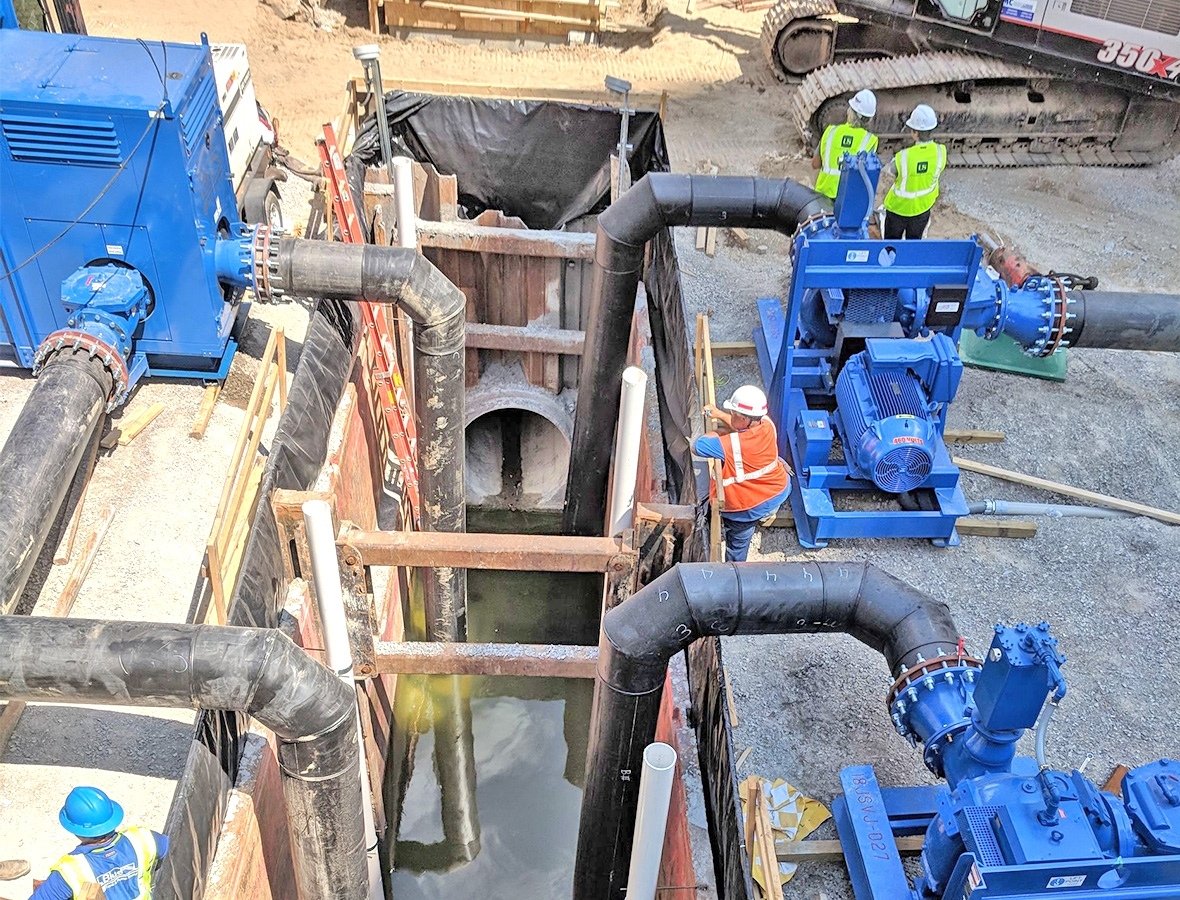
Working within Busy, Urban Areas
The project's location in the heart of downtown Louisville required careful planning and coordination in order to protect the surrounding community. Safety measures included a robust maintenance of traffic plan and night work to ensure that commuters and pedestrians had continual access to downtown businesses and attractions.
Through true teamwork and collaboration among the many stakeholders, the entire project – from concept to flow restoration – was completed in under seven months.
For a more detailed overview of the project – and its impact on the surrounding Louisville community – check out this video.
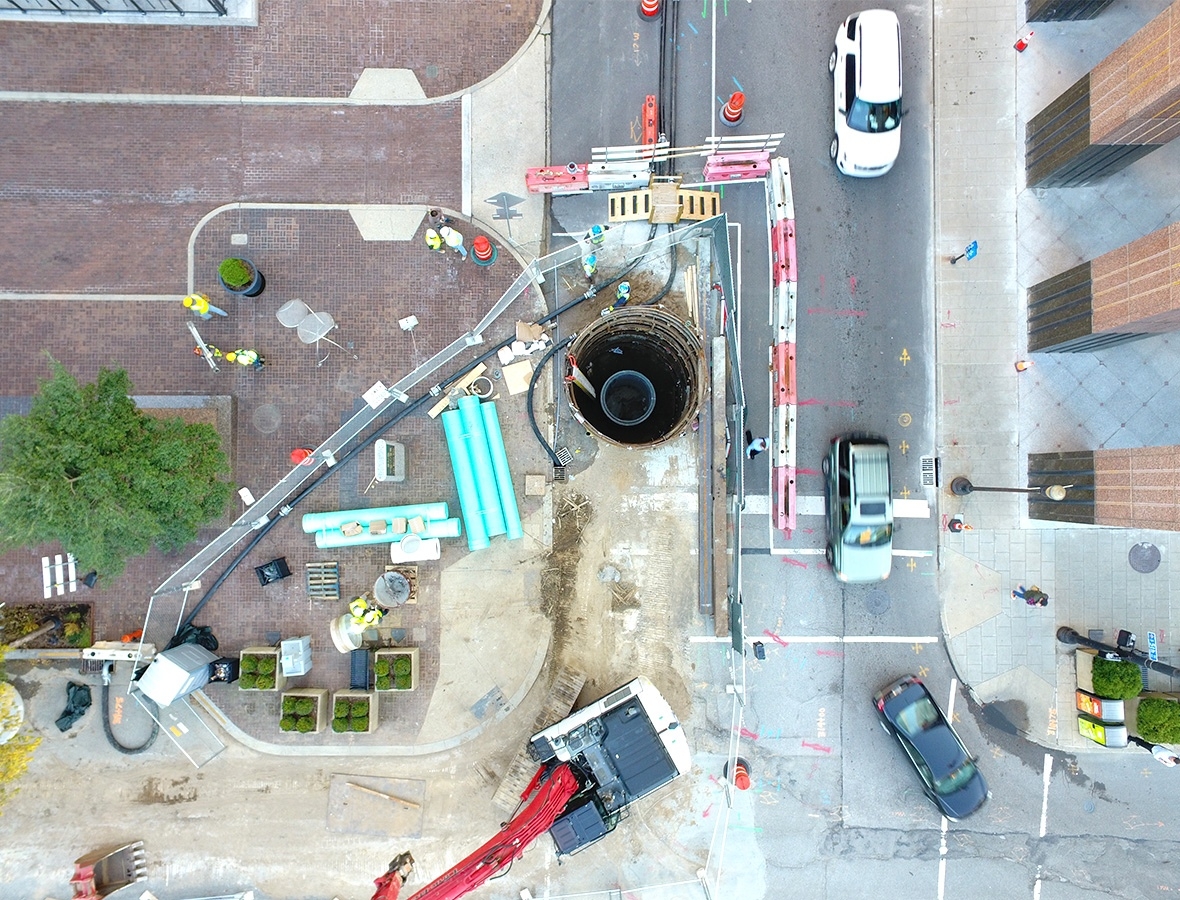
Awards
The Project received Engineering News-Record's Regional Best Project Award (Mid-West Region) in 2019 and received the Grand Award from the American Council of Engineering Companies in 2020.
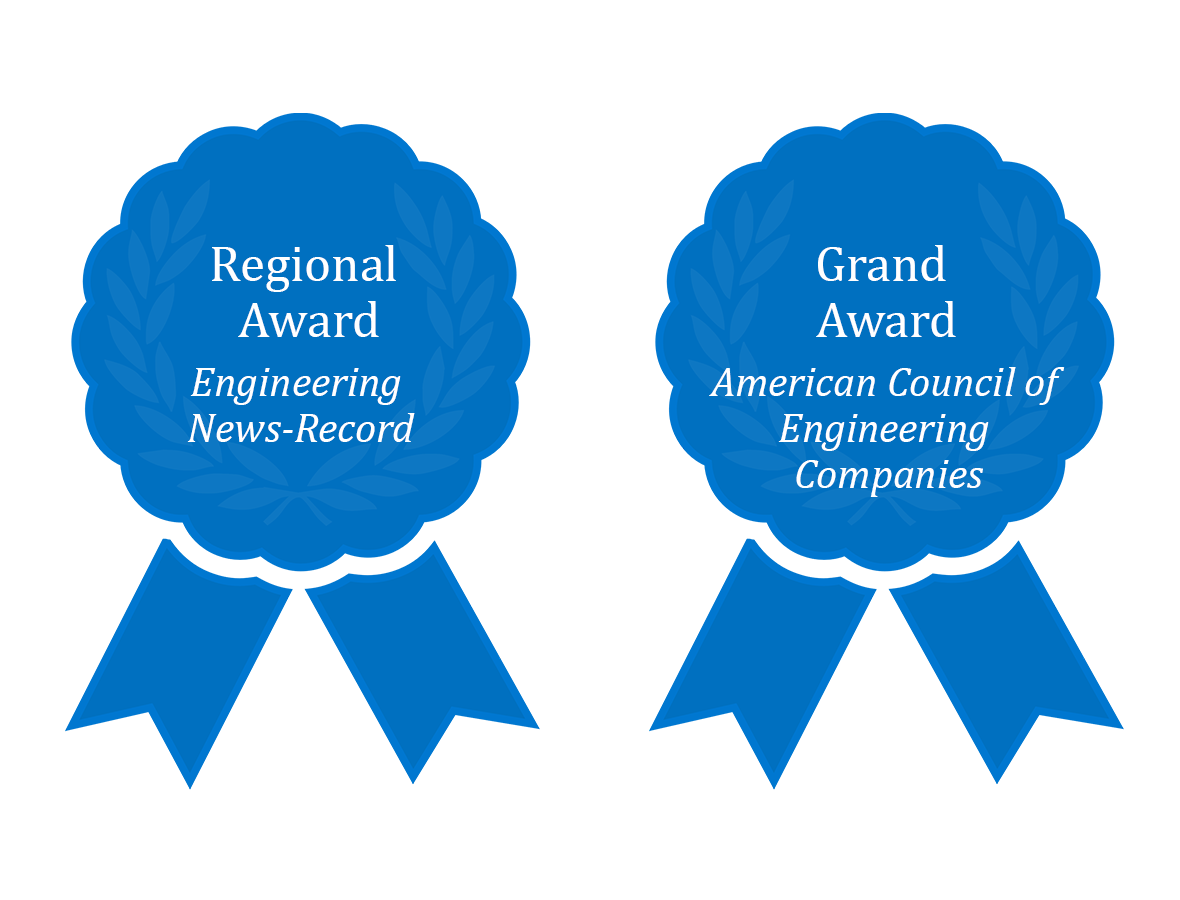

A Reliable Partner in an Emergency Situation
While the entire project was motivated by a sense of urgency, this need reached another level when a void was discovered between the interceptor and a main street. The Ulliman Schutte project team leapt into action to safely secure the area and to fill the eroded space, avoiding a potential collapse of the busy downtown roadway. This quick thinking and proactive problem-solving was a hallmark of the team's efforts on the critical rehabilitation project.
Video courtesy of Louisville and Jefferson County MSD



